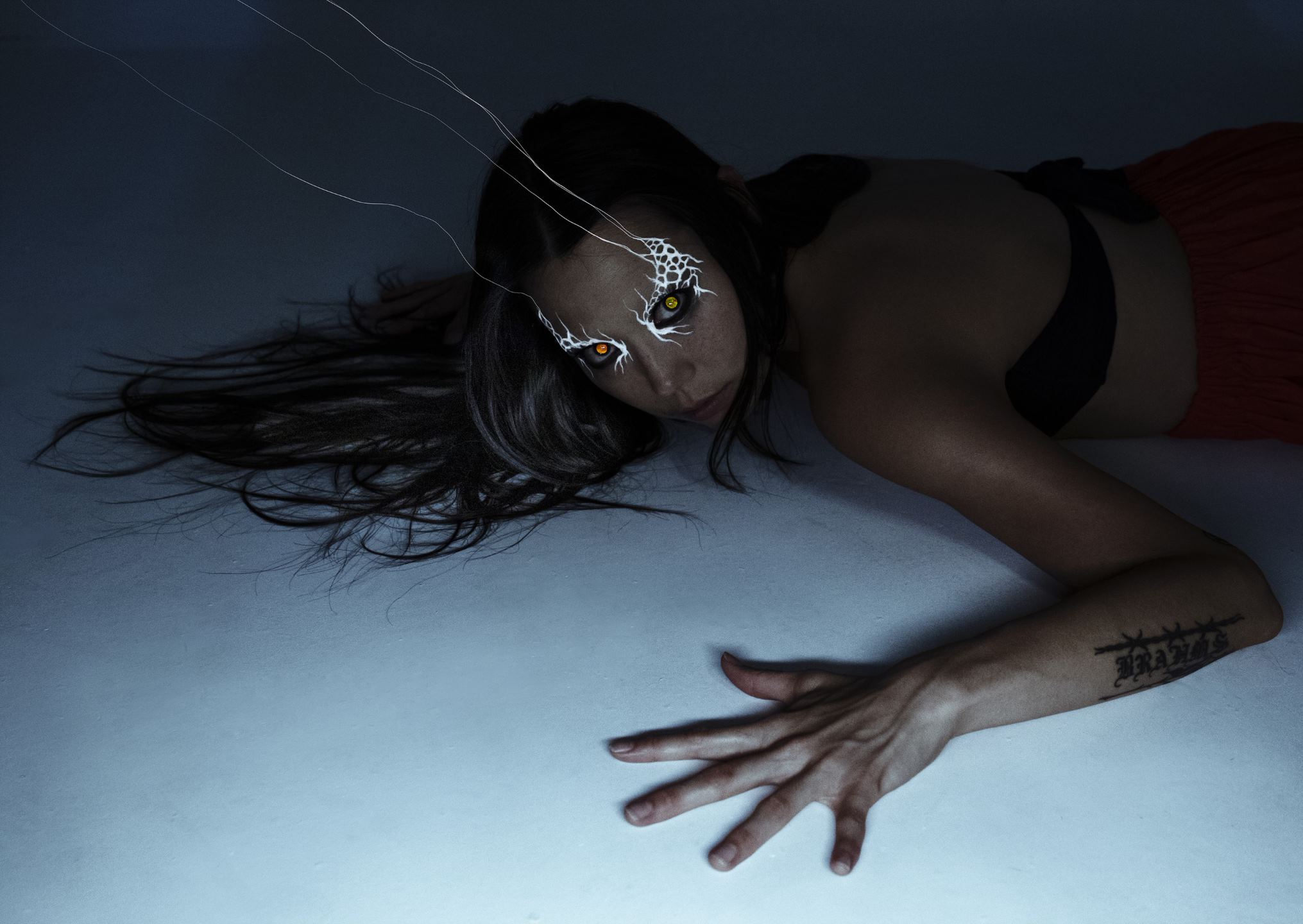
SASAMI is no stranger to providing optimal space of cathartic release through her music. With her self-titled debut album Sasami in 2019, she introduced her talents to the music soundstage with a participation in a new class of indie rock that positioned itself in the introspective core of the softer sides of human emotions. Lovelorn lyricism fueled by heartbreak, disappointment and melancholic sorrow found itself showcasing the unique ways the artist was able to create highly emotionally charged music that allowed listeners to feel deeply relatable and seen.
Three years since her last release, and inspired by the cusp of a world on the brink of a looming pandemic, Squeeze is introduced. Her latest body of work reintroduces the artist’s talent as one that extends her vulnerability and talents to the edge that lands on a pleasantly impressive, and quite metal, new plane.
On Squeeze, SASAMI remains highly powered from the fumes of emotionally charged lyricism, but moves from ruminating in the internal world to completely letting uncompromisingly loose in the external one. Having a classically trained musical and composing background, the ambitious project sees the artist trade technicality for the animalistic, and soft indie rock for the harsher gritty sounds of nu metal. Between electric guitar riffs, pounding drums and heavy bass, listeners are left to navigate a spectrum of reflections of human conditions that range from systemic violence, anti-toxic positivity and aggressive interpersonal relationships; as it reimagines the industrially heavy genre to intersperse contemplative moments of fantasy, folklore and the nature-human relationship. While soundtracked to the most stark sonic injection permeating from the influence of metal, the album also sees a myriad of influences from folk-pop on “Make It Right,” softer indie moments like on “Call Me Home” and even a classical composition like one of the final tracks “Feminine Water Turmoil.”
Also pulling heavy influence, is the use and interwoven themes of Japanese yōkai. A collection of spirited folk tales that stem from SASAMI’s heritage based curiosity. A descendant of the Zainichi people on her mother’s side, a diaspora of ethnic Koreans who lived in Japan during Japan’s occupation of Korea from 1910 to 1945, an exploration of her Korean-Japanese lineage drew her to the tales that spawned the interlaced fantasy world that expanded the albums world via its folkloric characters and stunning visual graphics.
Squeeze reintroduces SASAMI with a resolute declaration of her multifaceted artistic vision. Using the power of art, SASAMI aims to create new accessible spaces of haven for often overlooked and marginalized musical audiences to experience shared and deserved catharsis found in the more dynamic and aggressive moments within musics capabilities.
We spoke with SASAMI ahead of her album release on the inspiration behind her nu musical direction, her feminist reclamation of violence and how her work aims to create safe spaces inspired by environmental-forward fantasy that propagates tangibly real refuges of cathartic release.
To start things off, and what I consider the most important question, how are you today? And in general?
I’m good. I’ve had a very, very hectic album release kind of month. And I also think it’s kind of fitting while I’m putting out this album that kind of stretches out into all these different dimensions and genres, that I’m also having a very multidimensional month. I’ve been doing score work, some commercial and TV show composition and then some modeling and acting stuff. And I’m doing a show in New York tonight. And so it’s just been one of those all over the place months, but I’m feeling good!
That’s so much talent! How do you manage balancing it all?
The secret for me is that I don’t drink, and I do cardio every day. I just try to stay as healthy as possible. I think that’s also part of being in your 30s, you are in self preservation mode all the time, so I think if you’re lucky enough where your work and practice and your life practice both make you happy – then they feed into each other. You know, taking care of your health kind of feeds into your ability to do the best art practices possible. For example, on tour, I’m working out in the hotel gym every morning because on stage I’m running around like an animal. So it’s multi-beneficial and it keeps me healthy while also making it possible for me to sing and run around like a demon for 40 minutes.
Pro-tip! You just inspired me to change my life in five minutes. This really resonated as I’m also in my 30s, and your album actually comes out the day before my birthday – a special treat!
Wait, is that Aries season?
It’s Pisces season!
Wait! So the album is a Pisces?! on February 25?!
It’s very much a Pisces!
Oh my god! She’s definitely an Aries rising though. I think that she has some rage energy coming out of her pores, for sure.
It does – and it carries this album and your sound in a very new direction that dives into reimagining the concept of metal music. It’s like the piercing sounds of Korn (which I know you got to see recently!) mixed with the emotional lyrical depth to the likes of Joni Mitchell. What inspired this exploration?
In touring my last album, which was a lot more introspective and more internally emotional, over the years it became more and more extroverted and the sound of the set became way heavier. So I knew naturally, I wanted to go into a heavier direction for this album. And I think especially with making an album during the pandemic, and that this album was going to come out and be the first thing that I’m connecting with people on after so long of a forced break, I knew that I wanted to make something that was really extreme and really dramatic and not as delicate or nuanced. So to me, using these nu metal sounds was a way to ramp up the energy and extremity of the sound.
Adding to the ramped up energy is the impressive roster of artist collaborators. How do you feel they added to this quest for a sound and album with total sonic fullness?
I think that’s one of the benefits of being a solo artist and composer, I can kind of assemble my dream band every time I make a new piece of art or song on each album. On every song, there’s a different cast of players. Obviously, Dirk (Verbeuren) from Megadeth is playing on some of the heavier metal songs. Then, I have some friends from Eastman, the College I went to, playing violin and cello on some of the songs. Jay Bellerose, who’s an iconic jazz and folk drummer on “Not A Love Song.” And of course, I have my friends Patti Harrison and Vagabon doing the screaming, cathartic performance on “Skin A Rat.” Kyle Thomas (King Tuff) and Meg Duffy, my housemates, are playing on some of the songs because we were all making our albums at the same time. Obviously Barishi, who is now my backing band on tour, is the band on “Sorry Entertainer” because I knew I wanted that one to be a metal song. There’s just a lot of friends and different kinds of collaborators.
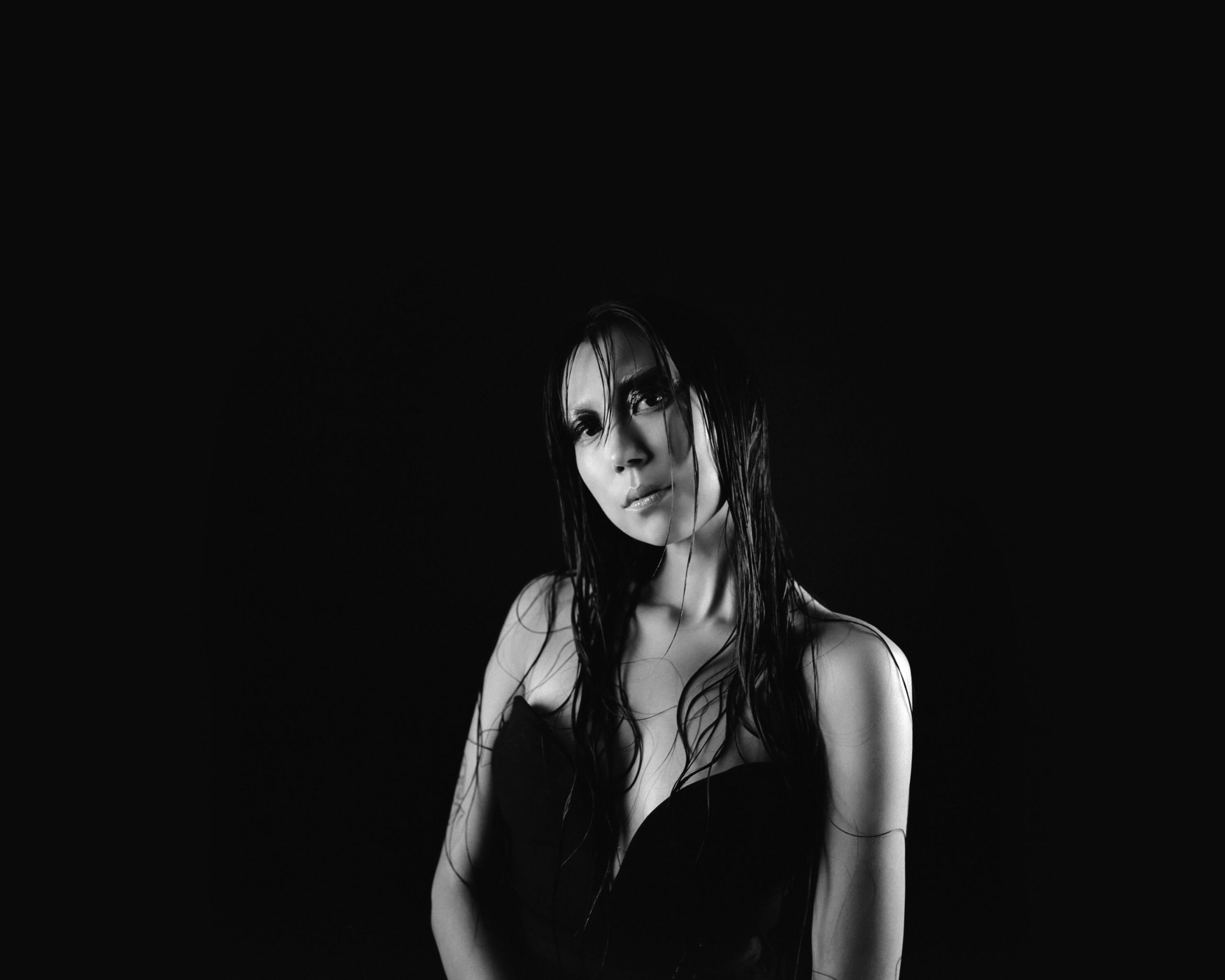
Considering your extensive background on being a classically trained musician and composer, do you feel like the pandemic changed or altered the process on how you approach creating music?
I knew that I wanted to enter into making artwork that was using an emotional palette that was different from the last album. On the last album, the palette was more introspective – longing, sadness and disappointment. Those kinds of feelings. I wanted this one to be much more revenge, anger, spinning out and violence. There’s still some elements of longing and frustration, some things that tie into the last album, but it’s a completely different color palette. In making this album in the pandemic, I was wanting to connect with people so much that I ended up making art that was as extreme as possible. Reaching my muscles as far as they could go to connect with people and shouting everything I wanted to say.
The album definitely carries that intensity, but also manages a delicate balance where your voice carries this bold power, but still maintains this air of softness.
Yeah, I mean, I’m not like screaming. Because to me I still wanted to use the instrumental elements that kind of tie into this emotional range, but I didn’t want it to be inauthentic. And I don’t even really like screaming on metal that much. I’m kind of more attached to the double kick pedal, a lot of slap bass and a lot of really distorted guitars that kind of references this nu metal sound. I just took the parts that I liked and discarded the parts that I didn’t connect with.
In essence, you stretched the sound to let the instrumentation do the emotional type screaming in place of your voice?
Yeah! Exactly.
Speaking of emotions, I love the idea of your album being “anti-toxic positivity” – a beautiful little catch phrase.
Totally!
It resonates as the messaging very much feels like its saying it’s okay to have feelings and not all feelings are pretty, have to be watered down or sugarcoated for the sake of consumption – which carries a powerful feminist undertone and reclamation. Why is that mission important for you to include in your art?
I think that a lot of extreme metal and heavy rock have lyrics that at times you can’t understand, but if you look them up – which I have done – they’re very violent and oftentimes objectifying and violent against women and femmes. They just include content that I don’t really connect with, but I also can appreciate how extreme it is. It’s kind of like a horror film where there has to be art that expresses all extremes of human emotional range, and that range can go in every direction. Violence is a very real part of the human experience, of earth’s experience and the experience of beings on earth.
I’m really obsessed with this Instagram account called Nature is Metal. It’s basically all these different images and videos of animals eating or fighting each other – and its violence. And violence is something that just exists. It’s not good or bad, I mean it’s bad when it’s unjust, but it’s something that’s also very natural. So I think it’s important to have art that expresses violence. So for me, having this kind of reclamatory experience of making art where the violence is not directed towards women and is more open ended is really important for people who look like me and who are in my community to be able to have a cathartic experience where no one is actually getting harmed.
Thats what I love about metal and hardcore, or even watching a horror film, you have this somatic experience of fear, danger and thrill – but without anyone being physically harmed. You have to have music you can turn on and listen to when you’re working out and lifting weights or punching a pillow and getting your frustration out. That’s what was intended in making some of the heavier songs – it’s very much for the listener to be able to have an emotionally liberating experience with.
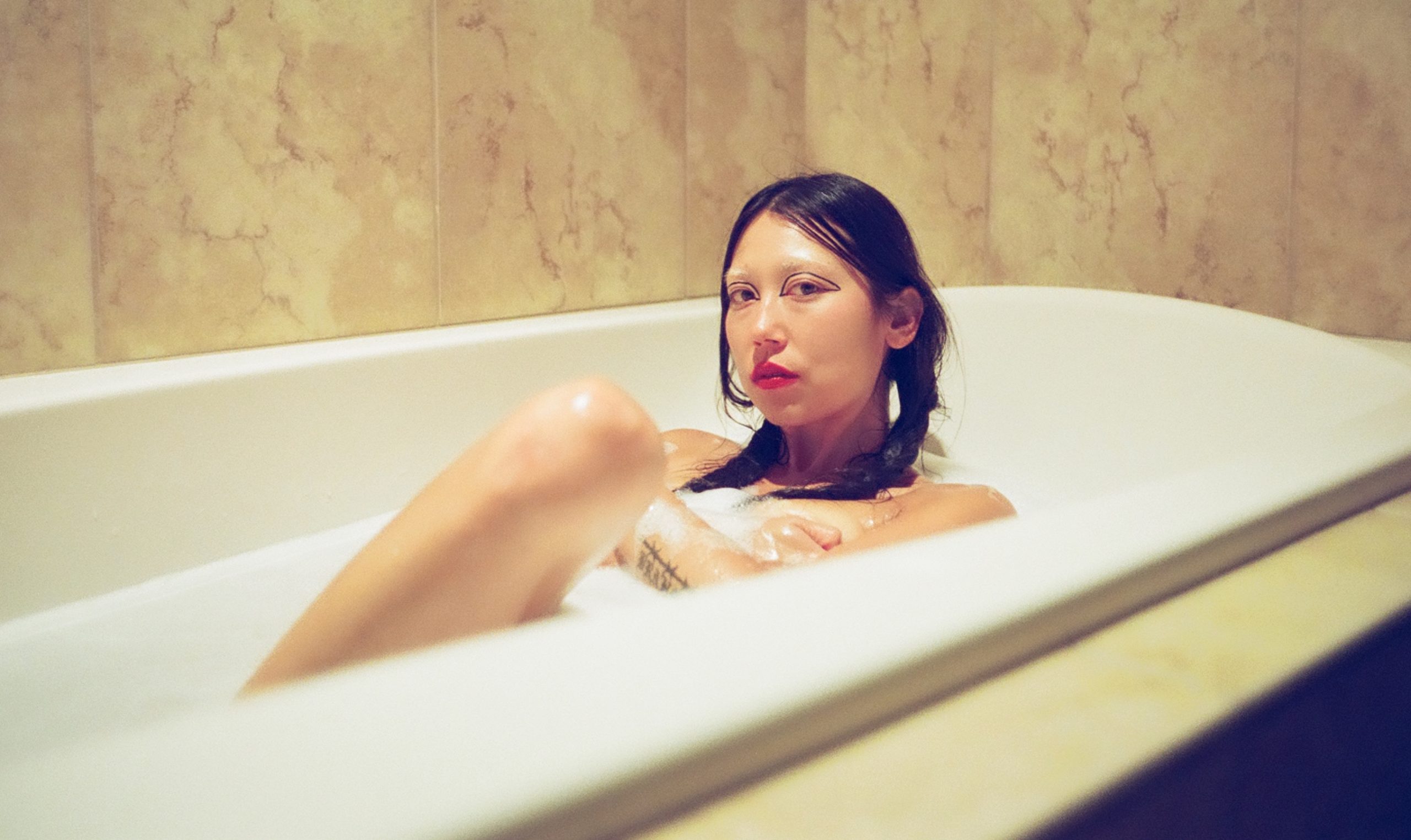
I feel a big accolade of the album is the re-imagination of these genres that are not explicitly exclusive, but very much carry non-inclusive aspects or traditions to them and helping turn spaces where often marginalized people don’t really feel like they fit in into a place where they belong.
Metal is extremely gatekeeping, even to other white men. Even within the genre of metal, people are very “this is thrash metal” or “this is black metal” or “this is tech metal.” People are very geeky about that genre in general. Being a queer person of color, it can be even more ostracizing. I’m not at all trying to say I’m a metal musician but I feel there are elements of (nu) metal where people who are already in my indie rock community can emotionally relate with, but maybe never have had an access point. Which is why I wanted to introduce it on my album and bring some elements in – but only the elements that feel really authentic to me.
Absolutely. The album definitely more metal in direction, but still kaleidoscopic as it manages to tie in elements of indie, country, folk etc. It’s diverse but cohesive, yet flowed so well down to the more delicate classical comedown of the outro, which is hard to pull off.
Yeah, it’s almost like aftercare after churning these emotional depths. I wanted to provide a space of more existential-like thinking. Less thinking with your heart and fists, and more thinking with your brain. To me, most of the album is talking about much more human nature concepts like systemic violence, longing and unrequited love, rage and hate. By the time we get to the end with “Not A Love Song,” I wanted it to be much more about humans’ relationship with nature, how we relate to it and how we always center ourselves to think nature belongs to us when it doesn’t. That song is really more a consideration of not every sound is a love song, and not every beautiful image is a photograph. Just floating into a more existential and contemplative place by the end after processing a lot of heavier things.
I love “Feminine Water Turmoil,” it really feels like a kind of little existential, but calming forehead kiss.
Yes! Totally.
Very Björk-like to tie together this artistic framing of the nature-human relational experience that I want to explore a bit more as you also introduce nature based fantasy and Japanese horror to the mix on Squeeze.
It’s inspired a lot by Japanese horror and Yōkai. Yōkai is basically a collection of Japanese folktales and there are a bunch of ghost animals and characters. Pokemon is inspired by them!
You worked in collaboration with artist Andrew Thomas Huang on the imagery to help incorporate these tales visually. What helped you in deciding on the representational character for the album?
This album, to me, is touching on a lot more elements of creating fantasy environments. So I knew that I wanted the cover to be an avatar and not such a literal photo of me. I was really lucky to be able to collaborate with Andrew who does a lot of work with Chinese deities and spirits and creates art in that realm. We collaborated on a lot of the visual counterparts for the album, and you know, there’s this fluidity and multiplicity on the album. I wanted to tie that in with the album cover and I was really attracted Nure-onna and the duplicity of this beautiful woman’s head with this kind of violent snake body. …And then there’s my Cancerian, crab legs put in there to represent me.
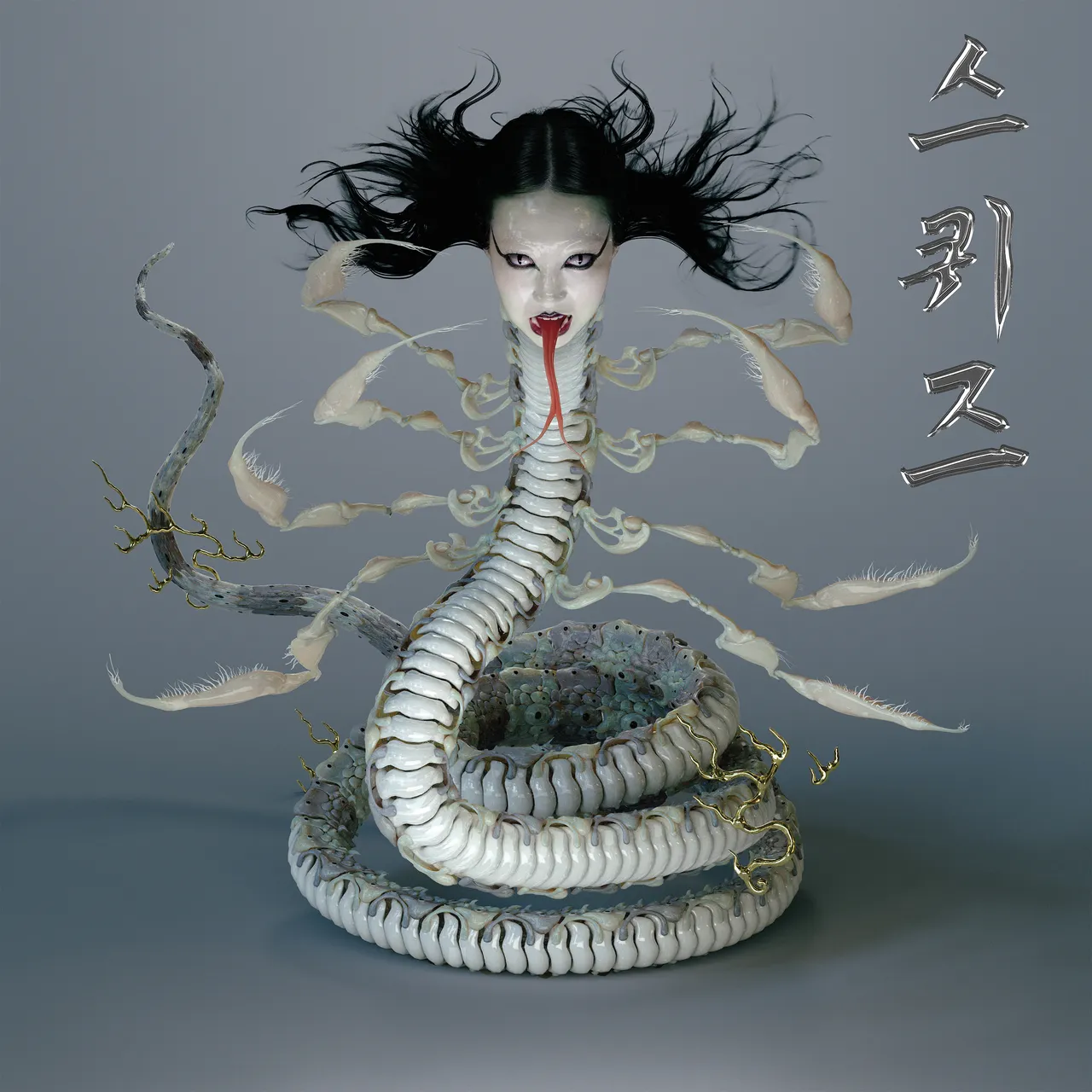
There’s a lot of meaning behind the album title as well, that helps elevate the thematics of the album. Can you elaborate more behind its origins?
The album title, Squeeze, has this feeling of multi-dimensionality. The word squeeze can mean something different to different people or on a different day. It can have this feeling of tenderness, like a hold or a hug. Squeeze can also be to squeeze out every last drop or squeezing onto an arm, and have this feeling of desperation or like choking in a more violent way. So the title and the cover are supposed to have these feelings of multiplicity, both tenderness and violence.
I was raised in an environment where girls are supposed to be polite and very much thinking with the heart, tender and not aggressive. I was raised very religiously, and violence and aggression is very frowned upon because you’re supposed to find solace, peace and altruism. But I think that we don’t choose our nature and we don’t choose our circumstances that are put onto us. There’s a lot of violence, aggression and darkness that’s thrust onto us whether we like it or not. It’s really important to acknowledge and process that to be able to be honest with your emotions as opposed to just quelling them because we’re told that’s the right thing to do. I just wanted to make art that allows people to let go and be as emotionally aggressive as they want to be, or just throw some elbows and get it out. You know, before having to deal with the healing part of it.
Overall, the takeaway seems to be about really allowing yourself to feel in pure rawness as a way to embrace the wholeness of yourself and the human experience.
For sure! Yes, thank you!
The album is also getting the live treatment. After a while of not touring, what are you most excited for and what are you hoping fans take away from your live performance?
Making the album, I was very cognizant about the fact that I was going to be touring it for a long time. I wanted to create a sonic landscape for a very dynamic and theatrical performance. So I’m just excited to put on a show and be able to get into this kind of fantasy headspace every night on tour.
One last question – we’re chatting via phone but I’m pretty obsessed with your fashion. Although I can’t see it, I would love to know what incredible look you are pulling off right now.
I’m very New York right now. All black – but like three pairs of pants. Black socks, black hoodie and black coat. Just all black for New York.
A look!
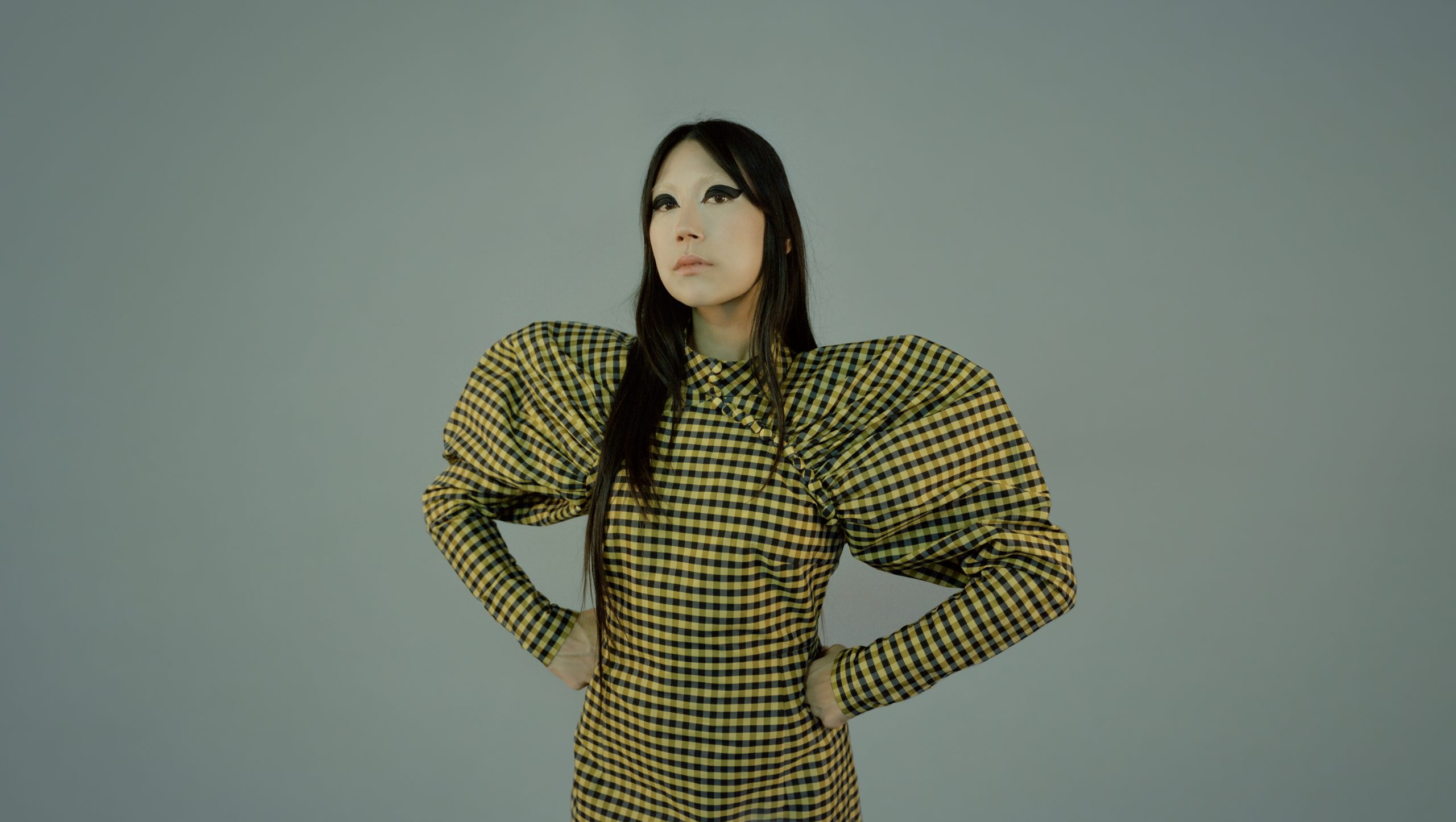
CONNECT WITH SASAMI
WEBSITE // INSTAGRAM // TWITTER // SPOTIFY
Story // Jeanette Diaz
Photos // Courtesy of Credited Photographers
